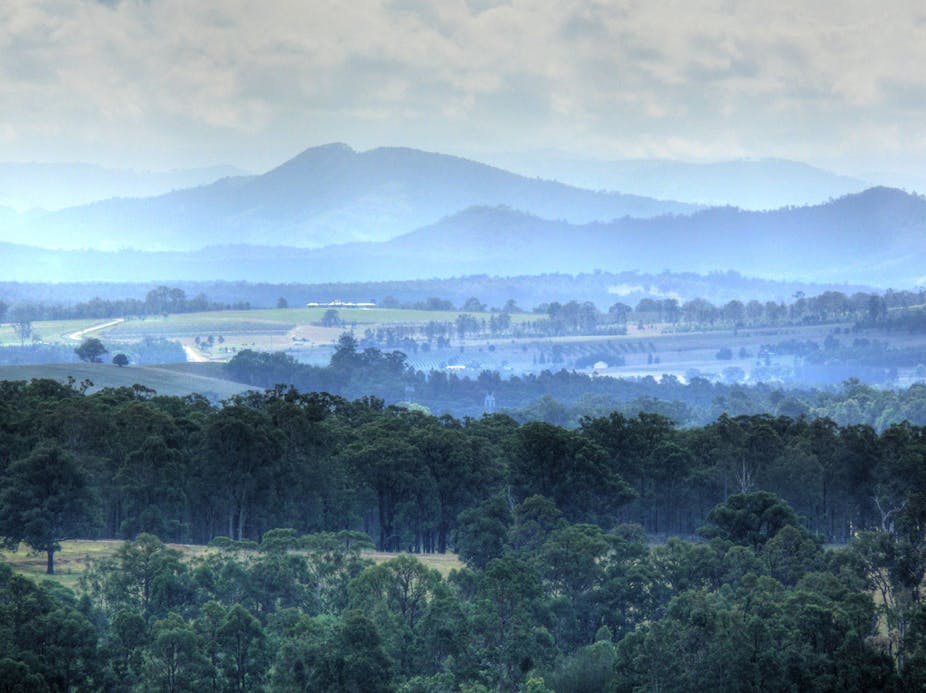If you believe industry propaganda, coal mining is a panacea not only for economic ills but also for smoothing troubled social waters. But a lack of local evidence about the health impact of the coal industry should give us all cause for thought.
With the highest density of coal mining activity close to towns and farms in Australia (well over 30 operating mines and six active coal-fired power stations, and the largest black coal exporting port in the world), many Hunter Valley residents remain unconvinced. Less than a two-hour drive north of Sydney, in one of the largest, most fertile, beautiful river valley systems in Australia, the Hunter region’s long tradition of coal mining has co-existed for many decades in balance with wine growing, racehorse breeding, dairy and other pastoral industries.
But the seemingly indiscriminate granting of mining licences by the previous state government (and little abatement likely under the current government) has put a major strain on relations between the mining industry, other local industries and the citizenry.
This is unsurprising considering inequities such as water rights favouring the coal industry over local farmers, the removal of local government input from the coal mine licensing process, and concerns about the transgenerational effects of irreparable environmental damage.
And then there’s health. Ongoing concerns and myriad anecdotal reports of serious health impacts have been expressed by both local communities and health professionals, and echoed by organisations such as Doctors for the Environment. But there’s virtually no hard evidence in the peer-reviewed literature to confirm or deny the negative health impacts on communities near coal mines or coal-fired power stations in Australia.
Such evidence is available in other countries and is summarised in a new independent report that cites 50 articles exploring the health and social harms of coal on community health from 13 countries. And it’s not pretty.
Health and Social Harms of Coal Mining in Local Communities: Spotlight on the Hunter Region cites excess deaths from lung cancer, chronic heart, respiratory and kidney disease related to living near coal mines. The evidence is mostly from the United States and often features a dose-response effect related to coal quantity or surface area of the mine. Other effects include high blood levels of heavy metals in children, and higher rates of birth defects.
Living near coal combusting power plants is associated with excess death – in this case from lung, laryngeal and bladder cancer. Respiratory complaints, increases in non-melanoma skin cancers, still births and miscarriages are also reported.
So how alarmed should Australians be? The problem is we don’t really know. Mining methods, practices and regulatory controls vary across countries and may account for some of the reported health effects. As may factors such as difficulties in accurately measuring exposures to toxins and particulate matter in air pollution.
Despite these limitations, it would be irresponsible to ignore the possibility that some of the effects demonstrated in similar countries are likely to apply here.
The lack of local evidence in itself is alarming - particularly at a time when NSW Health is believed to be investigating a cancer cluster in the Illawarra mining region of the state. Six children living in close proximity are said to have developed either leukaemia or a lymphoma in the past five years.
A report by the Australia Institute and many other technical reports on the coal industry point out that externalities are rarely included in cost estimates of the benefits and harms of coal extraction and combustion. These factors include environmental damage, social costs such as tax subsidies to the industry (of up to $10 billion annually) and health harms estimated by the Australian Academy of Technological Sciences and Engineering(ATSE) at $2.6bn annually.
Nonetheless, major developments in the coal mining industry are underway. Massive expansion of the port of Newcastle – already the world’s biggest black coal exporting port - is in planning stages. Commonly referred to as the “T4” Project, Port Waratah Coal Services propose expanding their Kooragang terminal in Newcastle in order to increase coal exports by up to 120 million tonnes a year.
Further coal port expansions are also planned by North Queensland’s Bulk Ports Corporation’s at Dudgeon Point, south of Mackay, and Rey Resources are planning their “Duchess Paradise” coal mine, which lies on a coal reserve estimated at 500 million tonnes near the Fitzroy River in the Kimberley, Western Australia.
But we have a glaring absence of local evidence to determine what impacts these projects will have on the health of surrounding communities. Surely such evidence should play a role in policy and planning of the expansion of Australia’s coal industry. It would also help us, as a society, to make up our minds about what we value more – money or our people and the planet that sustains us.

